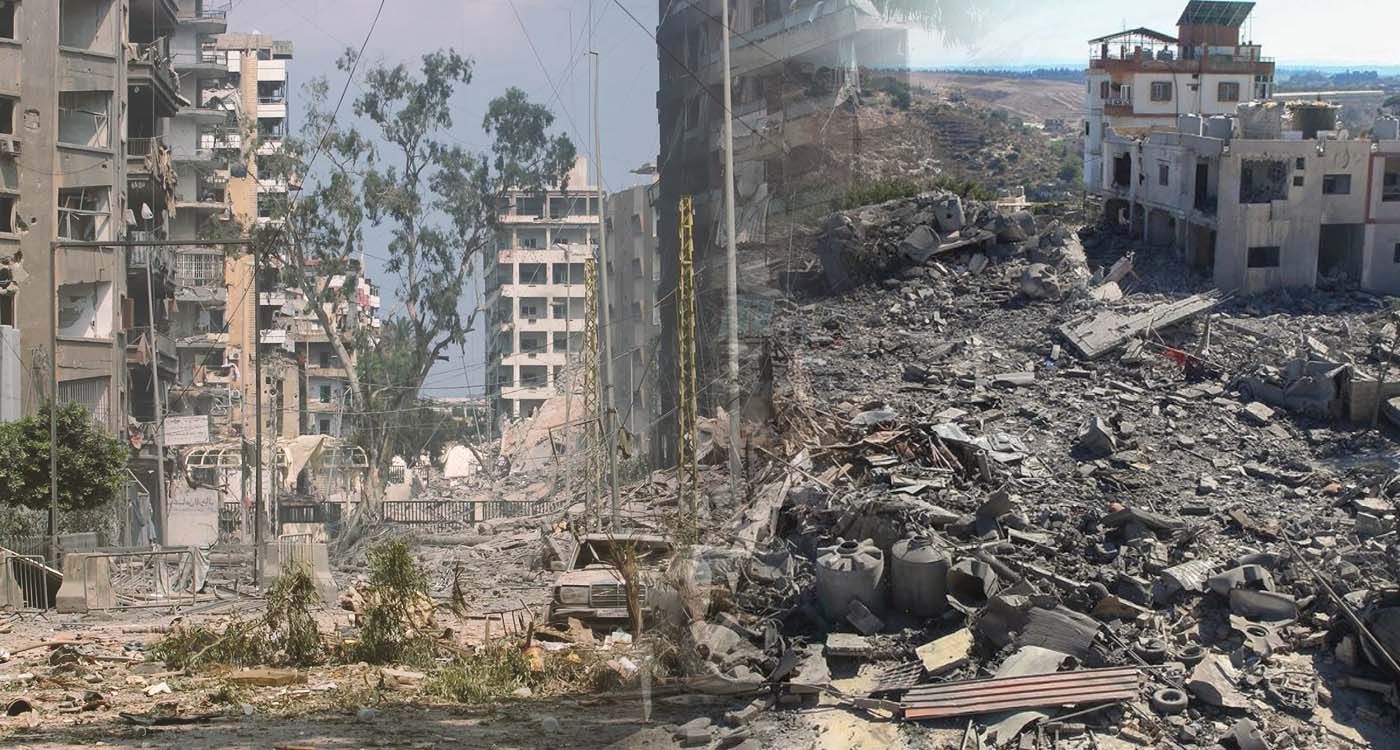
Thirty-three days since the escalation of fighting between Hezbollah and Israel began on September 23, the war shows no signs of ending. However, in 2006, the 33rd day marked the end of a "minor" conflict compared to what we are witnessing today.
While the wars of 2006 and 2024 have striking similarities, major differences are observed in terms of human toll, material damage, military strategies and the overall cost of war.
Human Toll and Population Displacement
In 2006, the 33-day war resulted in about 1,200 deaths in Lebanon, mostly civilians, with over 4,000 reported injured. Some 916,000 were displaced, including 220,000 who left the country.
In 2024, the human losses are even greater. Between September 23 and October 23, nearly 2,101 people, primarily civilians, have been killed, roughly double the number from 2006 over the same period. The annual human toll stands at 2,593 dead and 12,119 injured since October 8, 2023, according to a Ministry of Health report dated October 24.
To date, 1.4 million people, including 400,000 children, have had to flee their villages since October 8, 2023. Among them, 191,692 have found shelter in 1,097 shelters, 928 of which are over capacity. Between September 23 and October 24 alone, there were 800,000 displaced Lebanese. According to recent data from the General Security, 346,529 Syrians and 153,282 Lebanese have crossed the Lebanese border into Syria during this period.
Material and Infrastructure Damage
In 2006, Lebanon endured massive destruction of civilian infrastructure, with many buildings roads, and bridges damaged by Israeli airstrikes.
In the 33 days of war, around 100 bridges were destroyed, 342 schools damaged, and the ports of Byblos and Jounieh suffered deterioration.
Beirut International Airport was also bombed, and an oil spill occurred after Israeli strikes hit tanks at the Jiyeh power plant in the south. The final cost of losses was then estimated between $2.8 and $3.6 billion.
In 2024, the situation is nearly similar, though the intensified use of precision bombings has increased material losses. Lebanon's strategic and urban infrastructure, including schools, hospitals and communication centers, has been severely affected.
Recent figures estimate losses, since September 23, at $1 billion, solely for buildings damaged due to bombings. Between October 2 and 14, 2024, "over 3,600 buildings in Lebanon were reportedly damaged or destroyed," according to radar data from satellites evaluated by the BBC.
This brings the total loss since October 8, 2023, to over $12 billion, excluding a few billion dollars in economic losses assessed in recent reports since the start of the war.
Weapons and Tactics
In 2006, both sides used relatively "conventional" strategies. Hezbollah used short-range rockets, while Israel relied on airstrikes and limited ground troop deployments.
At that time, Hezbollah mainly possessed short-range Katyusha rockets and other unguided munitions supplied by Iran and Syria. These rockets allowed for saturation attacks, causing civilian destruction in Israel without much precision. They also had RPG-29s and anti-tank missiles like the Russian Kornet and Iranian Toophan, effective against Israeli Merkava tanks.
For Israel, air power was key, as the military objective focused primarily on neutralizing Hezbollah positions in southern Lebanon. Over the past 18 years, both sides have succeeded in developing their arsenals. Israel now uses drones and precision missiles. Hezbollah has bolstered its long-range rocket arsenal and uses more sophisticated anti-aircraft weapons.
The use of cyber warfare and jamming communication systems also adds a new strategic dimension, as demonstrated by the attacks on pagers and walkie-talkies on September 17 and 18, conducted by Israel against Hezbollah fighters.
Additionally, targeted assassinations of senior leaders and high-ranking figures of the pro-Iranian group are part of Israel's tactics. Furthermore, Tel Aviv heavily relies on its Iron Dome (anti-missile system) to protect its border towns. In response, Hezbollah has also developed its military capabilities. Since the beginning of the war, it has employed longer-range missiles and precision technology, including conversion kits to transform unguided rockets into precision-guided missiles (PGM).
The group also possesses Fateh-110 ballistic missiles, capable of targeting Israeli infrastructure over a longer distance. The increasing use of drones and sophisticated anti-tank missiles, like the Kornet and other man-portable air defense systems (MANPADS), marks a significant shift toward more targeted and destructive strikes.
The current war between Hezbollah and Israel reflects a significant escalation in human losses and material destruction compared to 2006, indicating a hardening of military strategies and an intensification of hostilities in a region where tensions are heightened by the broader geopolitical context.




Comments